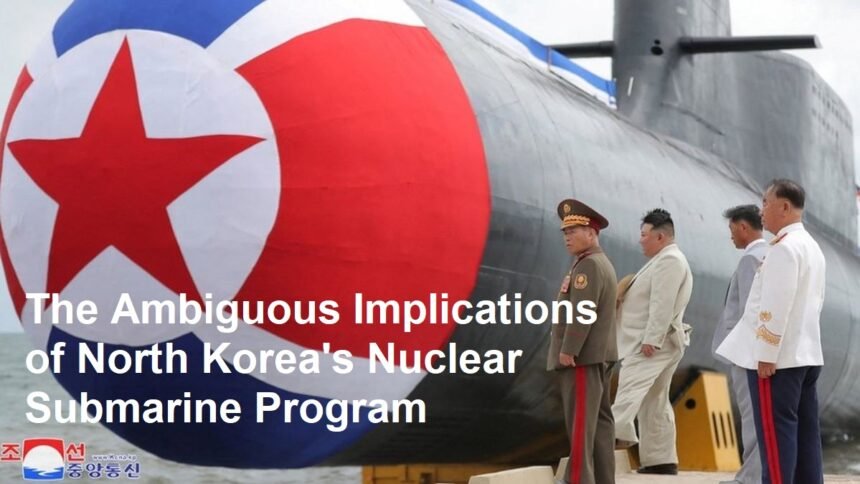The Democratic People’s Republic of Korea (DPRK), often referred to as North Korea, recently made an announcement that has reverberated across the international community: the launch of its first “tactical nuclear attack submarine.” While the claim itself warrants immediate scrutiny, the parallel report by The Korea Times, analyzing images released by the state-run Korean Central News Agency (KCNA), suggests this submarine is still under construction. This seeming contradiction highlights the complex nature of information emanating from the DPRK and raises critical questions about the country’s evolving military capabilities and strategic intentions.
The announcement, couched in rhetoric characteristic of North Korea’s leadership, serves multiple purposes. Domestically, it aims to bolster national pride and reaffirm the regime’s strength in the face of persistent economic hardship and international pressure. Internationally, it acts as a signal of defiance, a stark reminder of Pyongyang’s continued pursuit of nuclear weapons and advanced delivery systems, despite UN sanctions and diplomatic efforts to denuclearize the Korean peninsula. The carefully orchestrated media event, complete with official pronouncements and photographic evidence, is designed to project an image of technological advancement and military might.
However, the concurrent report by The Korea Times, based on an analysis of the KCNA-released images, provides a crucial counterpoint to the DPRK’s official narrative. The suggestion that the submarine is still under construction significantly alters the interpretation of the announcement. It implies a degree of technological immaturity, suggesting that the DPRK’s nuclear submarine program is still in its nascent stages. This is critical because a fully operational nuclear-powered submarine equipped with nuclear-capable missiles would dramatically alter the strategic calculus in the region.
The development of such a system would provide North Korea with a credible second-strike capability, rendering its nuclear arsenal less vulnerable to a preemptive attack. This would, in turn, escalate tensions in the already volatile Korean peninsula and potentially undermine the credibility of existing security alliances. A submerged nuclear-armed submarine presents a difficult and costly targeting challenge, complicating regional stability and demanding a recalibration of defense strategies.
The ambiguity surrounding the current state of the submarine, however, presents an opportunity for cautious optimism. The fact that the DPRK chose to showcase a submarine still under construction, rather than a fully operational vessel, could be interpreted as a calculated signal designed to elicit a particular response. It may be a bargaining chip, a way to pressure the international community into engaging in negotiations that address North Korea’s security concerns and economic needs.
Alternatively, the announcement could be a strategic miscalculation, overstating the DPRK’s capabilities in an attempt to project strength. Regardless of the underlying motivation, the international community must respond with a measured and coordinated approach. This includes reinforcing existing sanctions regimes, strengthening diplomatic efforts to restart denuclearization talks, and maintaining a robust defense posture to deter any potential aggression.
In conclusion, the announcement of North Korea’s nuclear submarine program, coupled with the contradictory reporting on its actual state of development, presents a complex and multifaceted challenge. While the prospect of a nuclear-armed submarine in North Korean hands is undeniably concerning, the ambiguous nature of the situation allows for a nuanced approach. By combining firm deterrence with persistent diplomacy, the international community can strive to de-escalate tensions and pursue a path towards a more stable and secure Korean peninsula. The key is to recognize that information emanating from the DPRK is rarely straightforward and often requires careful analysis and contextual understanding.












